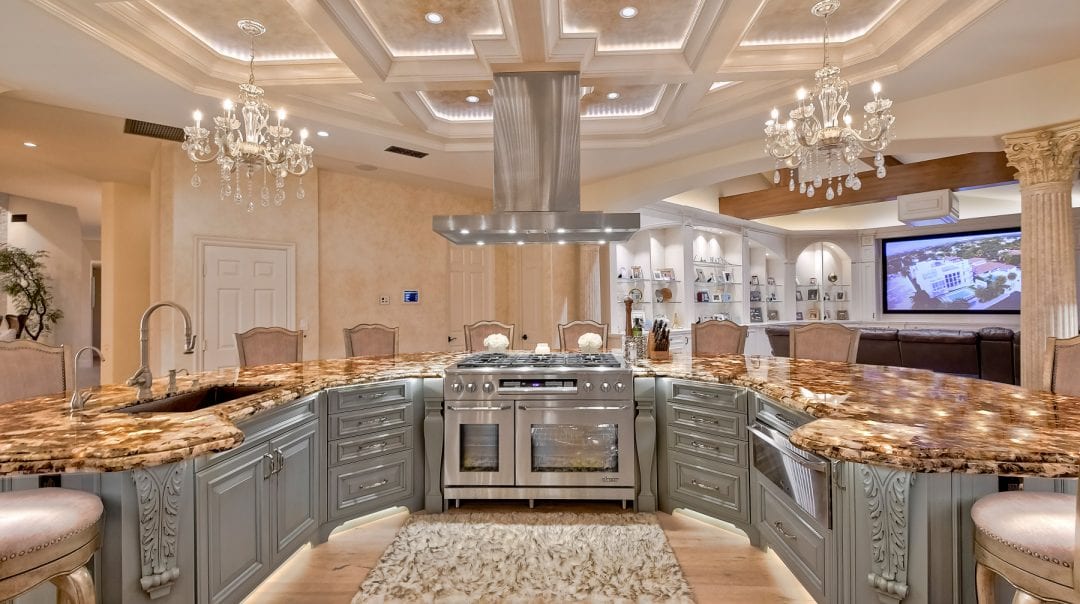
Embarking on a kitchen remodel journey? Dive deep into this guide and discover how to plan a kitchen remodel that elevates aesthetics and enhances functionality. From setting budgets to choosing styles, we’ve got you covered.
The kitchen, often dubbed the heart of the home, is where culinary magic happens, families gather, and memories are crafted. Over time, evolving design trends, wear, and tear, or a simple desire for a fresh ambiance might nudge you toward a remodel.
Beyond aesthetics, remodeling a kitchen can significantly boost your home’s value, enhance its functionality, and allow you to infuse your personal touch. It’s not just about keeping up with the latest trends but creating a space that truly resonates with your lifestyle and preferences.
Before diving into kitchen renovations, defining what you aim to achieve is crucial. Are you looking for more storage, a modern design, or energy-efficient appliances? Having a clear vision will streamline your decisions and keep the project on track.
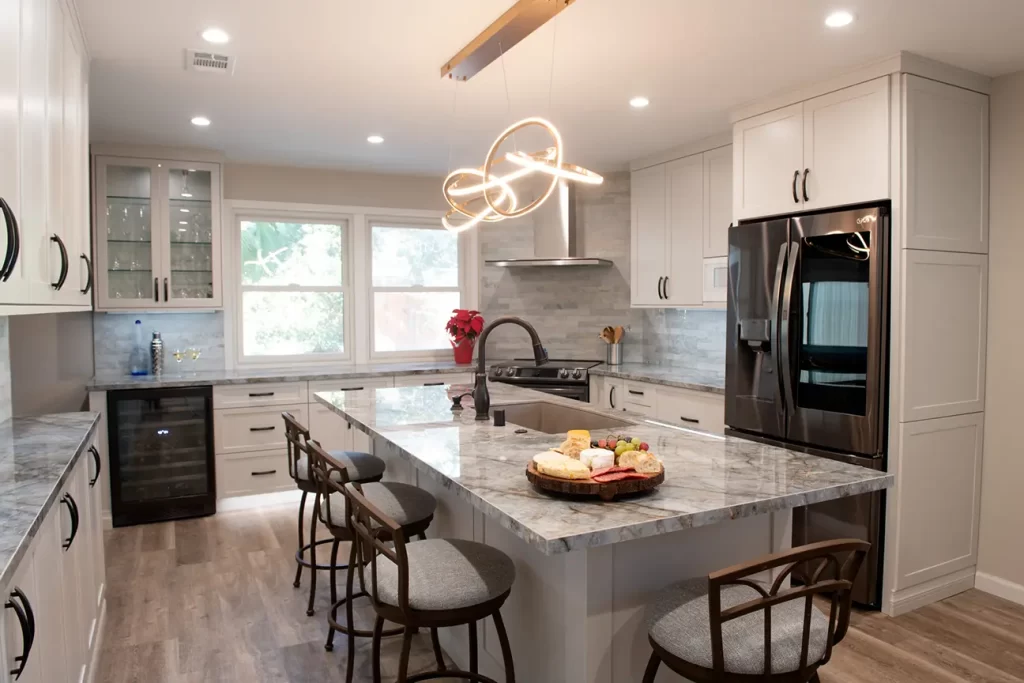
A kitchen remodel can be both exciting and overwhelming. However, with a systematic approach, you can ensure a smooth transition from your old kitchen to your dream space.
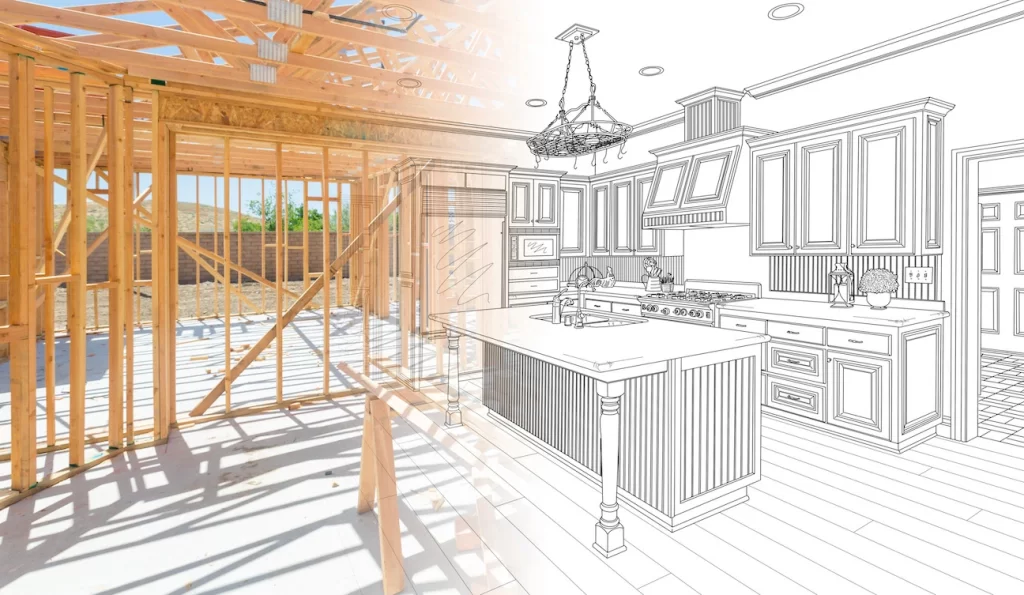
Every remodeling project comes with its own set of challenges. You can mitigate budget overruns by setting aside a contingency fund. You can avoid delays due to material shortages with thorough research and early procurement. Unexpected structural issues? Collaborate with your contractor to find cost-effective solutions. Being prepared for these challenges ensures they’re mere bumps in the road rather than roadblocks.
Your kitchen layout plays a pivotal role in its functionality and aesthetics. Here are some of the most popular and efficient kitchen layouts:
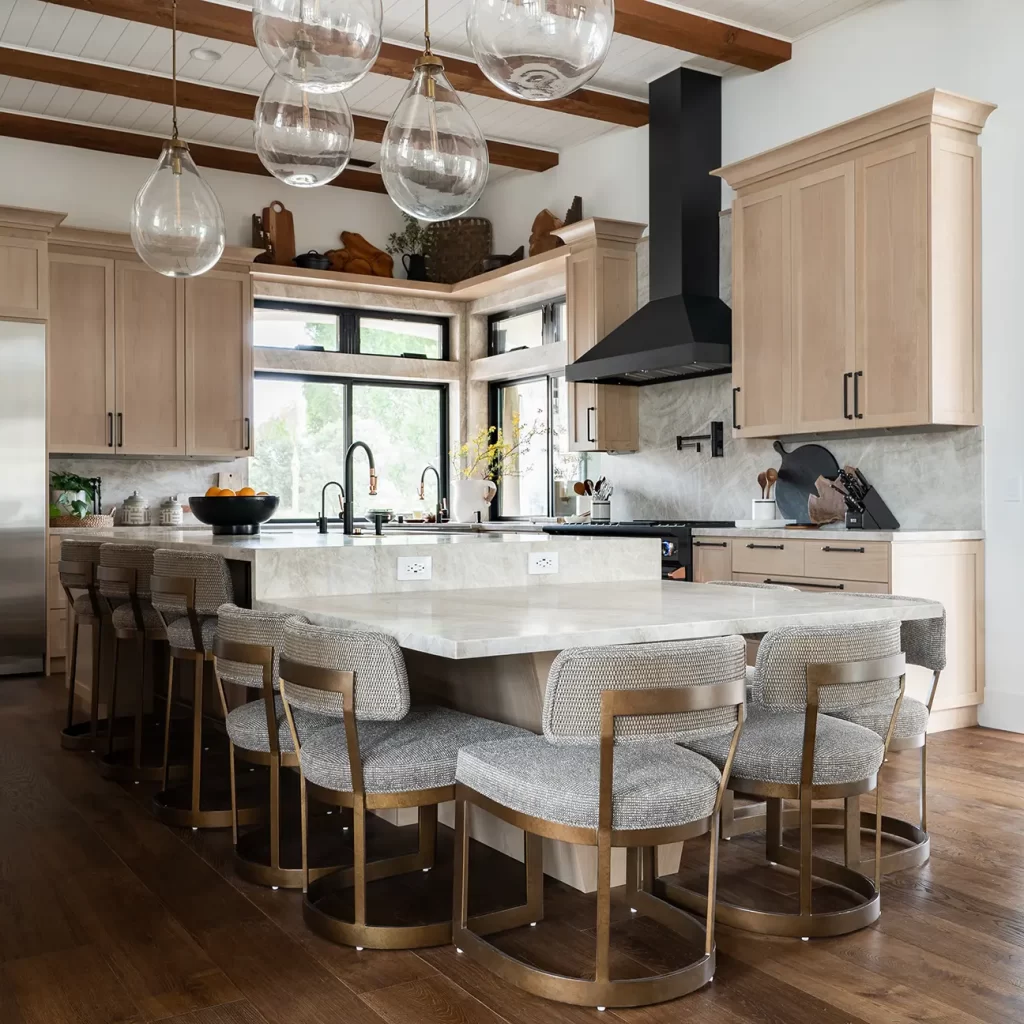
Embarking on a kitchen remodel is an exciting venture, but it can also be overwhelming without proper planning. It’s essential to have a comprehensive checklist in place to ensure a smooth remodeling process. That not only helps you stay organized but also ensures that no detail is overlooked. Here’s a kitchen remodeling checklist to guide you through each step:
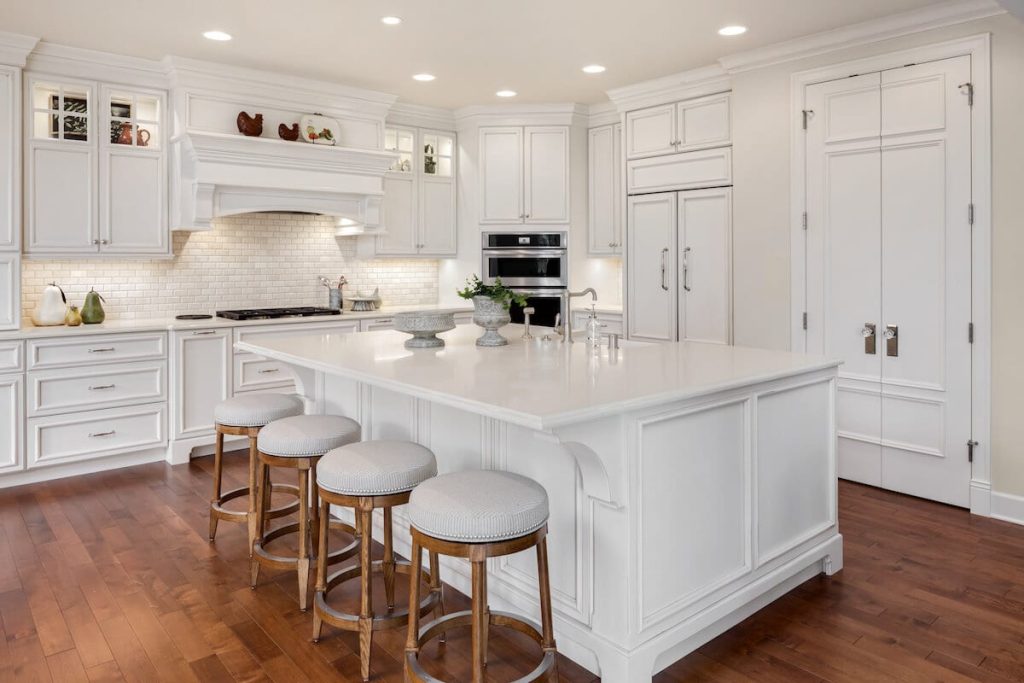
The materials you opt for can significantly influence the outcome of your remodel. From countertops to cabinetry, making informed choices is crucial.
The market offers many countertop materials, each with unique advantages and limitations. Whether you’re leaning towards granite, quartz, porcelain, or laminate, consider factors like durability, maintenance, and aesthetics.
Cabinets are more than just storage spaces; they define your kitchen’s overall look. Delve into various styles, from rustic to modern, and choose finishes that align with your design vision.
Your kitchen floor endures daily traffic, spills, and more. Opt for materials that are visually appealing, durable, and easy to maintain. Should flooring go before or after cabinets? Typically, installing flooring before cabinets ensures a seamless look and avoids potential complications.
A backsplash serves a dual purpose – protecting your walls from splashes and adding a design element. Choose materials and designs that complement your countertops and cabinetry.
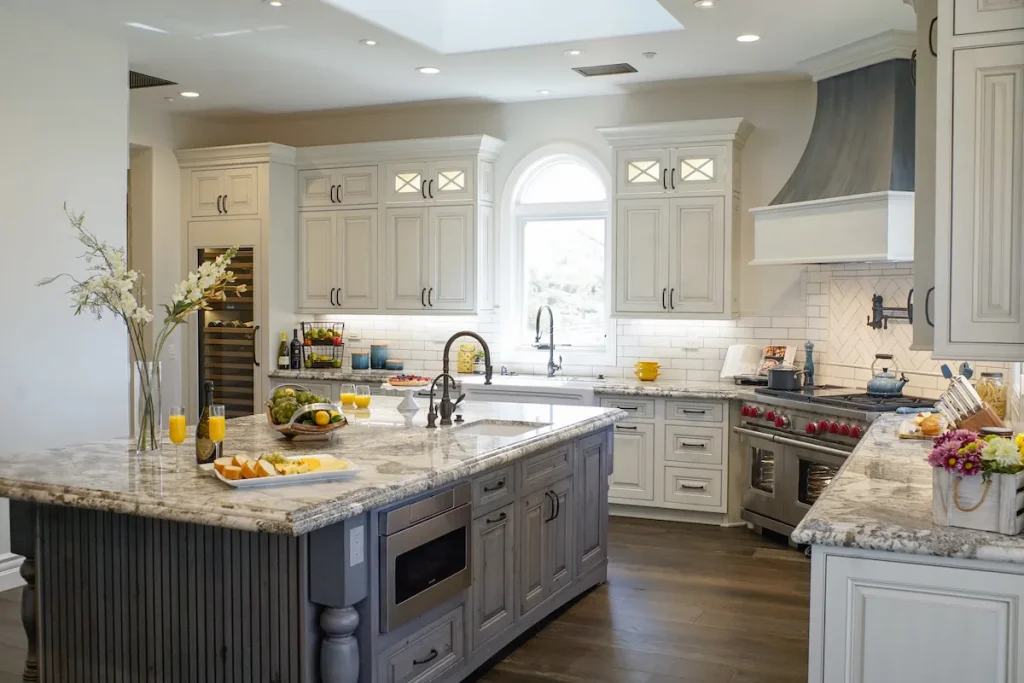
Not having enough storage can lead to clutter.
Solution: Plan for ample cabinet space and consider innovative storage solutions.
This can lead to an inefficient kitchen layout.
Solution: Ensure the stove, sink, and refrigerator are placed in a triangular configuration for optimal movement.
Opting for cheaper materials can lead to early wear and tear.
Solution: Invest in quality where it matters, like cabinetry and countertops.
This can lead to overspending.
Solution: Outline a clear budget at the outset and stick to it.
What’s trendy now might not be in a few years.
Solution: Balance trendy choices with timeless designs.
Many homeowners are leaning towards sustainable kitchen remodeling in today’s eco-conscious world. Consider eco-friendly materials like bamboo for flooring or recycled glass countertops. Energy-efficient appliances reduce your carbon footprint and offer significant savings in the long run. Opt for LED lighting, which consumes less energy and lasts longer than traditional bulbs. By making environmentally friendly choices, you can have a beautiful and kind kitchen for the planet.
Today’s kitchens are tech-savvy spaces, blending functionality with innovation.
Modern kitchens often boast appliances that offer convenience at the touch of a button. From smart refrigerators to ovens you can control via smartphone, technology is reshaping kitchen experiences.
Embracing energy-efficient appliances is a win-win. Not only do they reduce your carbon footprint, but they also lead to substantial savings in the long run.
Effective lighting can transform your kitchen, making it look spacious and welcoming. Incorporate a mix of ambient, task, and accent lighting to achieve the desired effect.
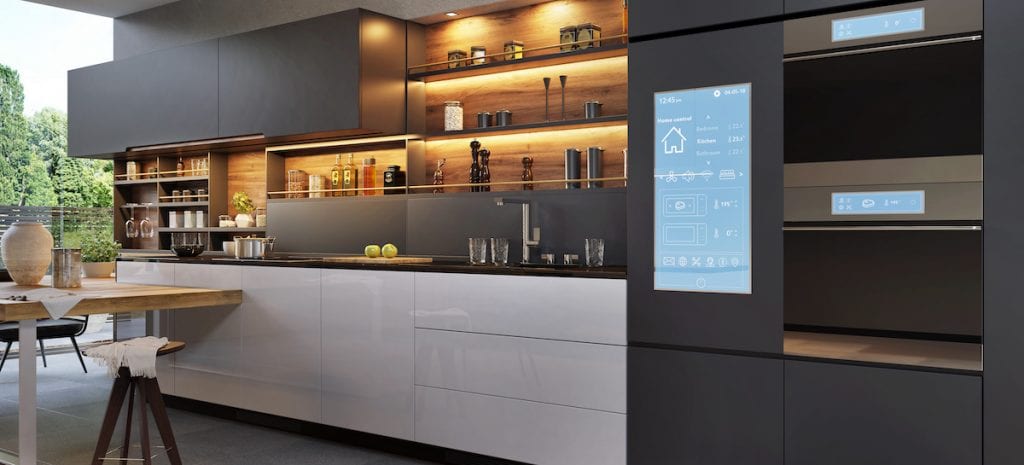
While aesthetics and functionality are vital, safety should never be compromised.
Adhering to local building codes is non-negotiable. It ensures your kitchen is safe and can save you from potential legal hassles.
When it comes to electrical and plumbing tasks, always trust licensed professionals. Cutting corners might seem tempting, but it can lead to dire consequences.
A well-organized kitchen can elevate your cooking experience, making every moment spent there a sheer joy.
The classic kitchen work triangle – encompassing the stove, sink, and refrigerator – optimizes movement and functionality. Planning a Kitchen Layout with this principle in mind can make your space more user-friendly.
Innovative storage solutions, from pull-out trays to corner cabinets, can maximize space and reduce clutter. Kitchen Space Planning is crucial to ensure every utensil and appliance has a designated spot.
If your kitchen layout permits, consider adding an island or peninsula. These features provide additional workspace, storage, and even seating options.
With the major tasks out of the way, it’s time to focus on the details that make your kitchen uniquely yours.
Colors play a pivotal role in setting the mood. Opt for a palette that reflects your personality and complements the overall design.
Personal touches, whether a family heirloom or a piece of art, can infuse warmth and character into your kitchen.
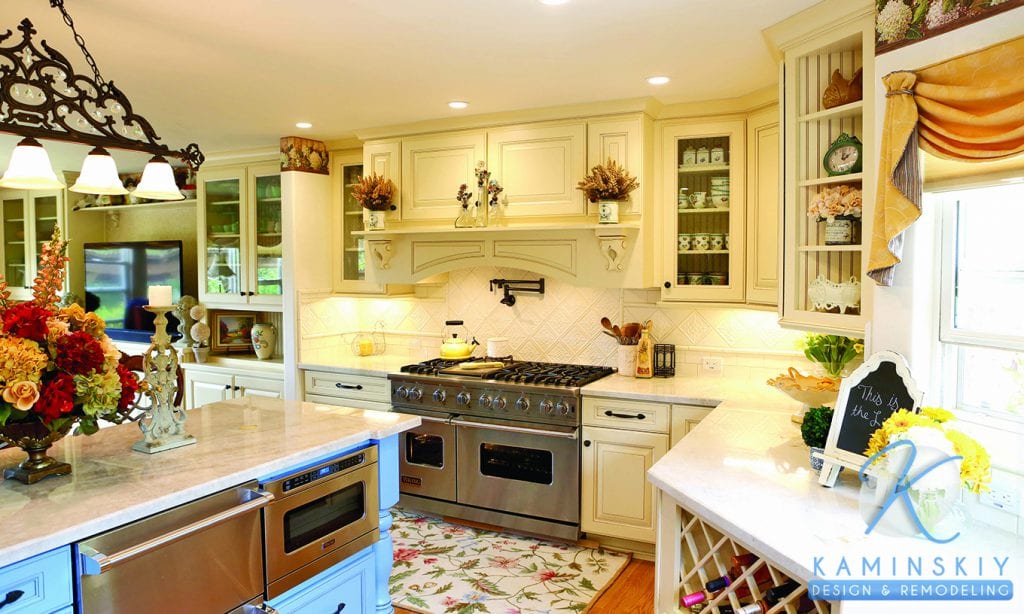
After the dust has settled and you’re enjoying your newly remodeled kitchen, it’s essential to maintain its beauty and functionality. For countertops, understand the cleaning agents suitable for the material—granite might require different care than laminate. Regularly check appliances for wear and ensure they’re operating efficiently. Wooden cabinets can benefit from occasional polishing, while stainless steel appliances shine brightly with a gentle wipe-down using a microfiber cloth. By dedicating a little time to maintenance, your kitchen will remain a source of pride for years to come.
After meticulous planning, budgeting, and hard work, take a moment to bask in the glory of your new kitchen. It’s a testament to your vision, effort, and passion. As you whip up delicacies and create new memories, remember that every corner of your kitchen tells your story.
Starting with a clear design and layout is crucial. Typically, you’d begin with demolition, followed by plumbing and electrical work. Once these foundational elements are in place, move on to flooring, cabinetry, countertops, and finally, paint and decor.
It’s advisable to start with larger items like cabinetry and appliances. These elements often dictate the kitchen’s layout and overall design, making choosing complementary countertops, backsplashes, and fixtures easier.
Cabinetry, countertops, and high-end appliances typically consume the most significant chunk of a kitchen remodel budget.
Many homeowners find the initial planning phase, where they have to crystallize their vision and make numerous decisions, to be the most challenging.
Classic designs, often characterized by neutral color palettes, timeless fixtures, and minimalist aesthetics, tend to remain evergreen.
Pay attention to the importance of quality materials, adequate storage solutions, and ensuring the remodel adheres to local building codes.

Kimberly Villa is a recognized expert in the Home Design and Remodeling industry. Her passion for the industry is matched only by her love for sharing insights, new trends, and design ideas. Kimberly’s expertise and enthusiasm shine through in her contributions to the Kaminskiy Design and Remodeling website blog, where she regularly shares valuable information with readers.